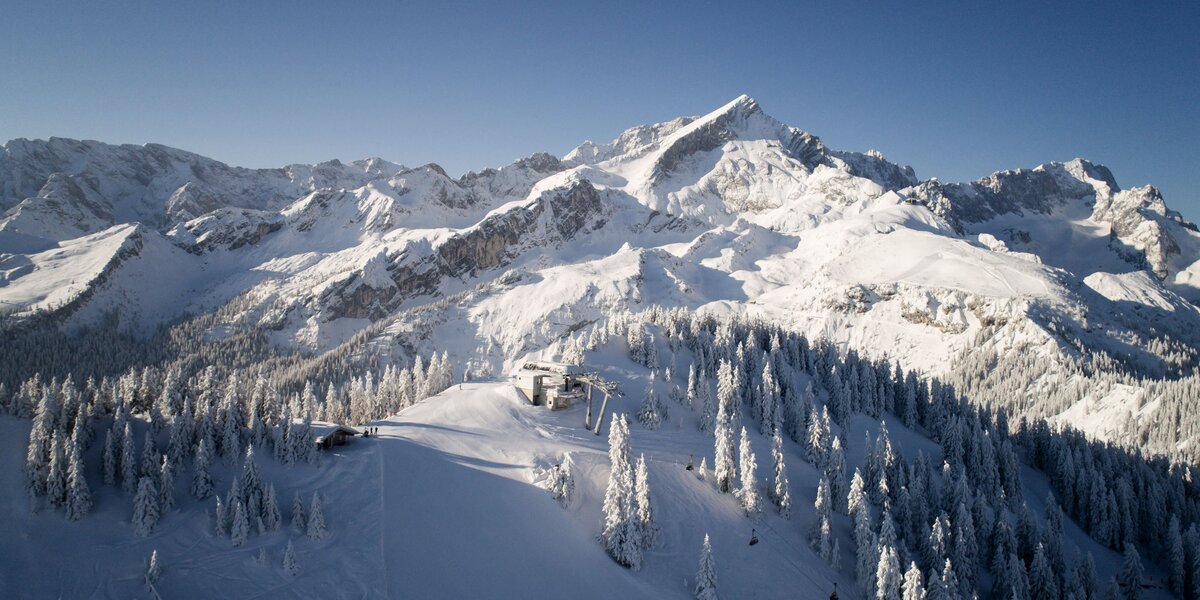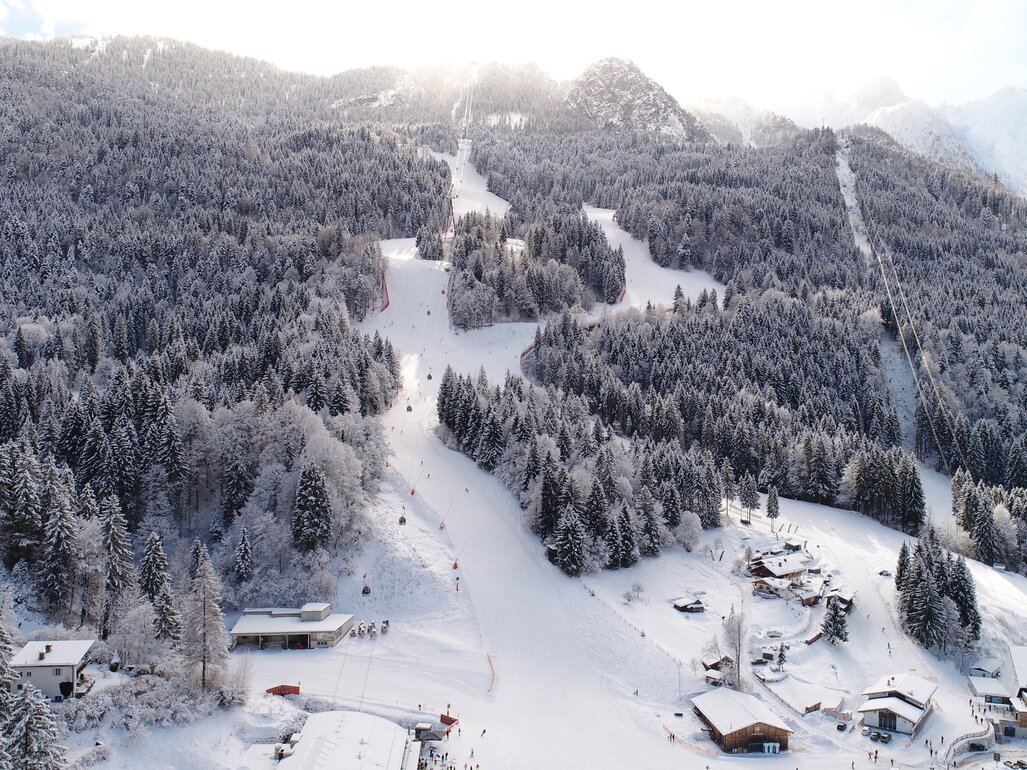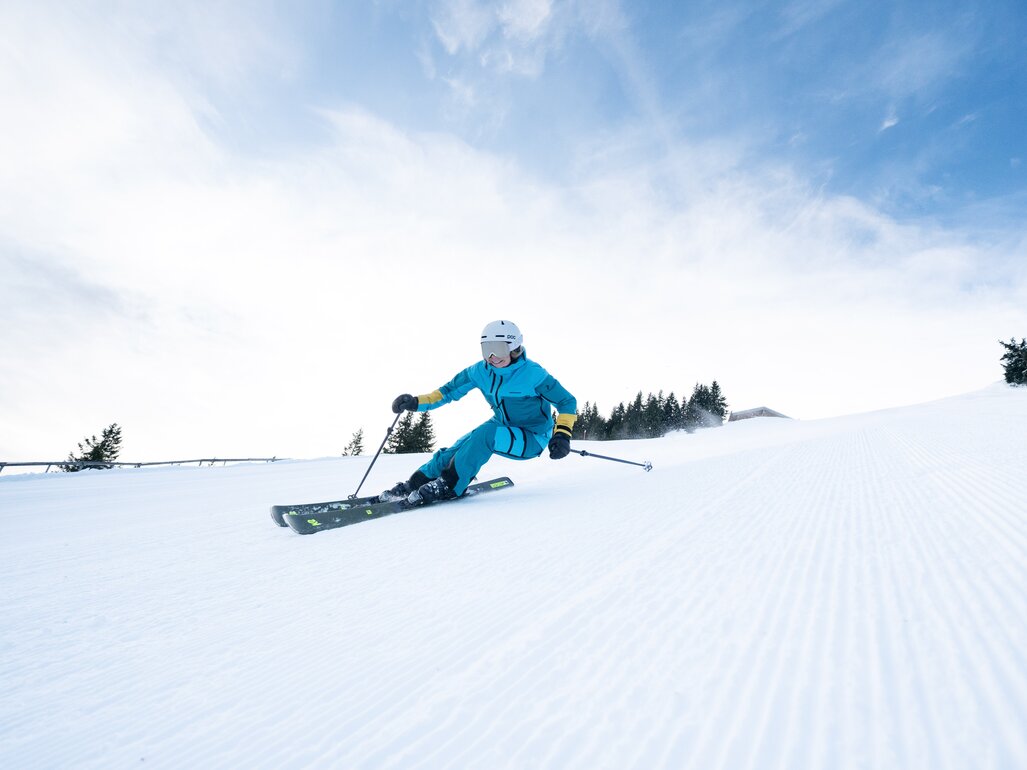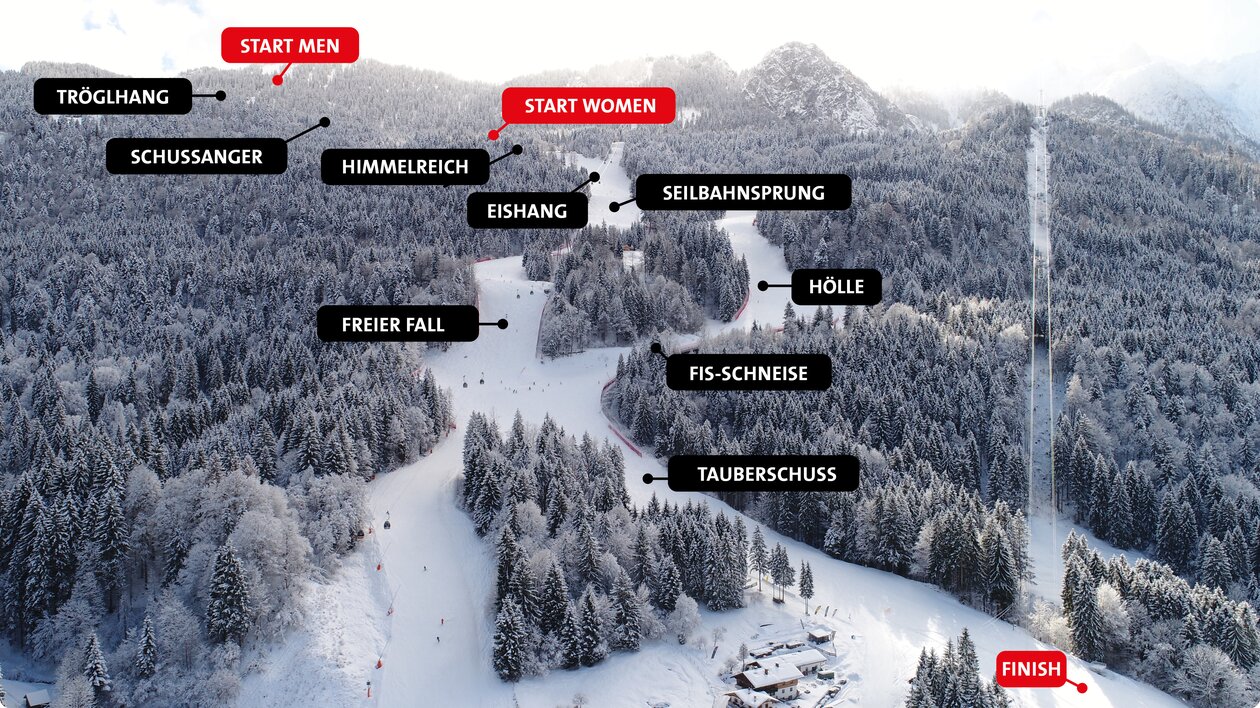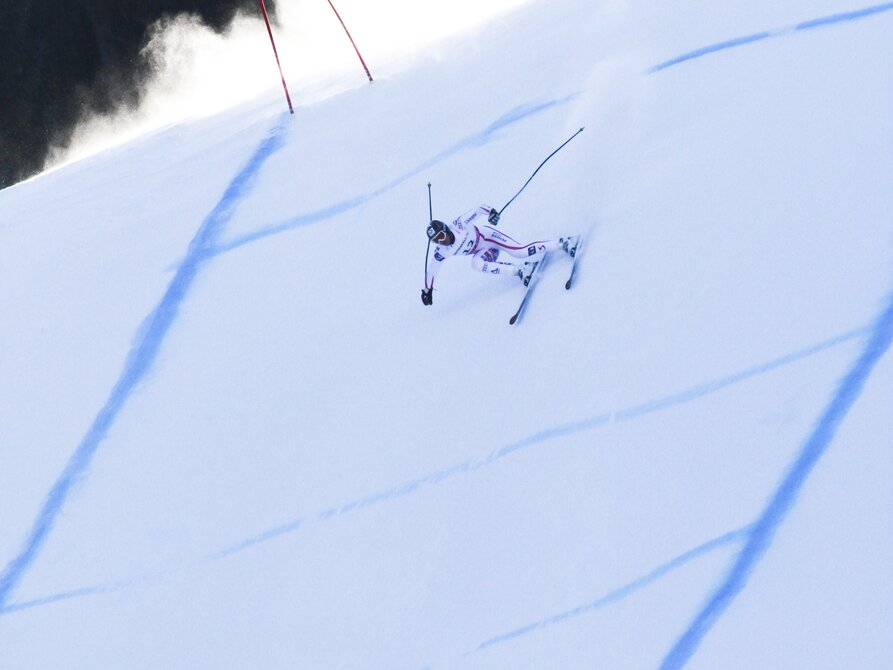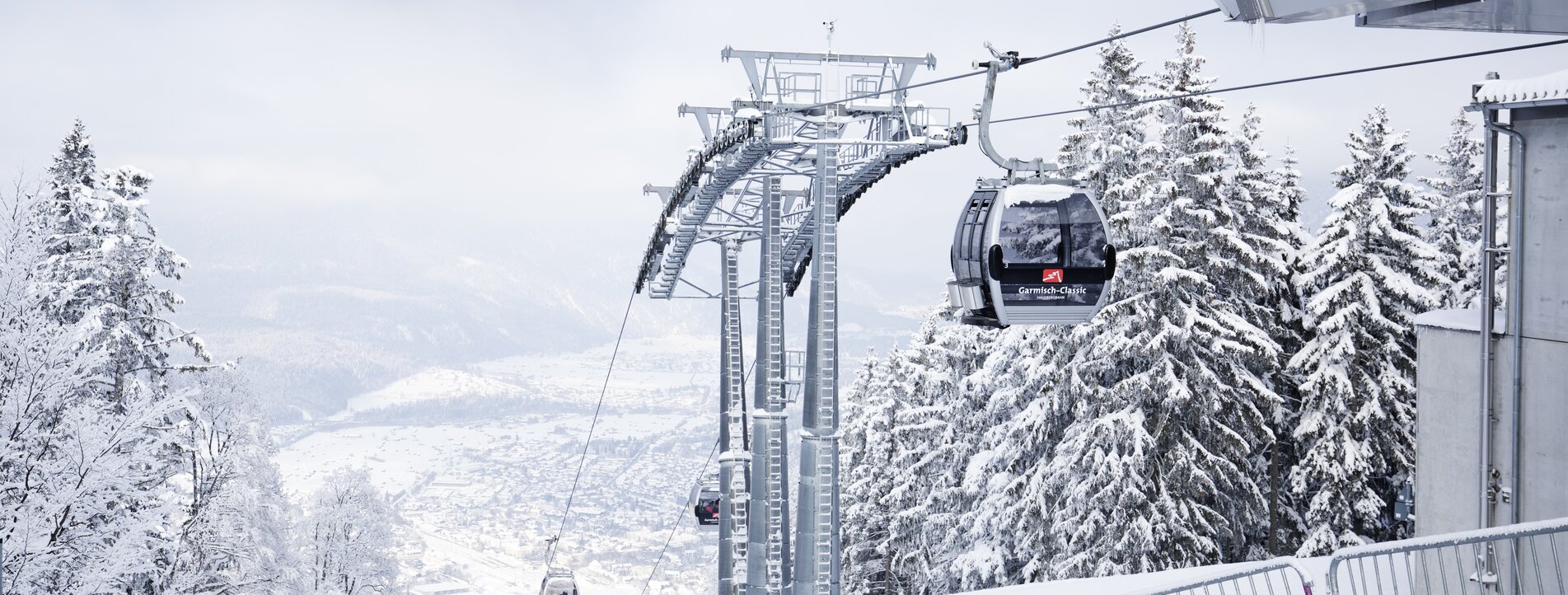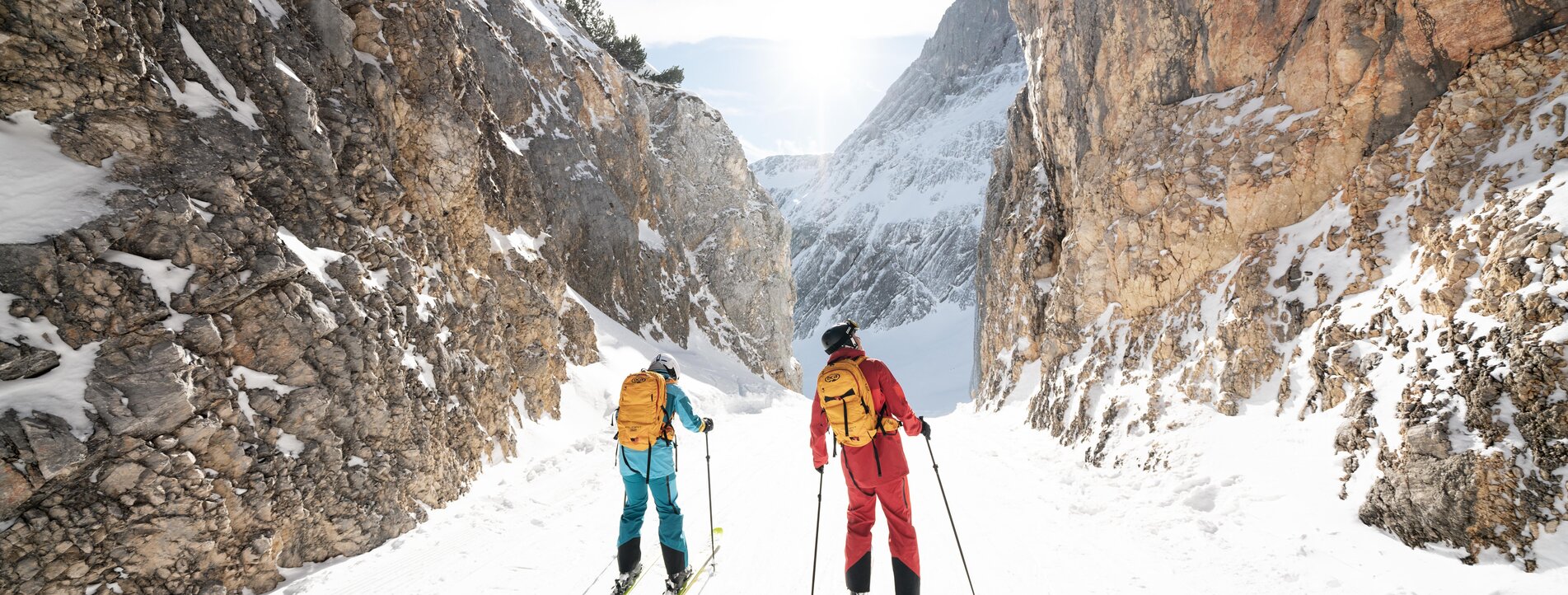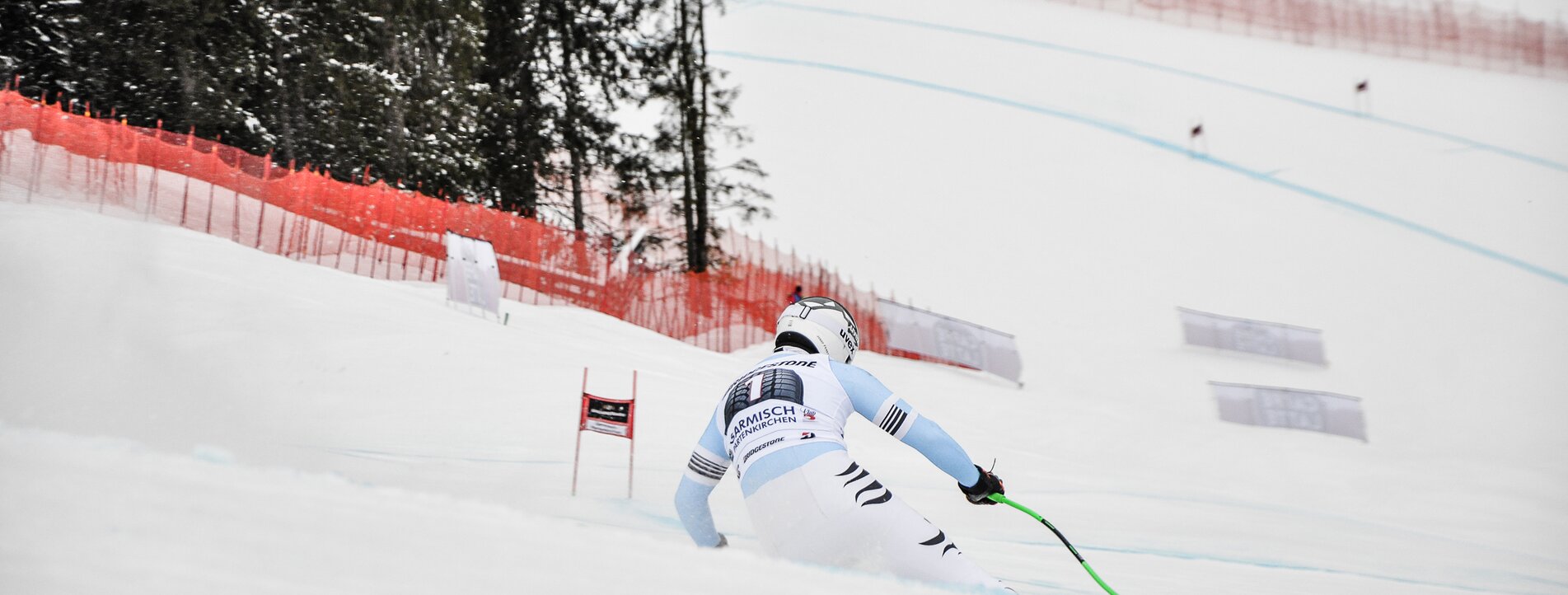The downhill run of the World Cup elite
Steep & demanding
Kandahar downhill run
Experience & fitness required
One of the most demanding downhills in the FIS Alpine Ski World Cup: the Kandahar run.
The name of the run goes back to Frederick Roberts, Earl of Kandahar. In his name, numerous efforts were made to establish Alpine skiing in the form of downhill and slalom in the FIS. Since 1954, Garmisch-Partenkirchen has also been the venue for the famous Kandahar races.
Through “heaven” and “hell”
The downhill run of the World Cup elite
The Kandahar not only challenges ambitious leisure skiers, it also demands a lot from the best skiers in the world. The legendary downhill slope is considered to be one of the most demanding routes of all. Since its renovation in 2008, the Kandahar has had the steepest slope section in the entire World Cup with the "Freier Fall".
Striking route sections
- Hölle
- Tröglhang
- Eishang
- Seilbahnsprung (jumping distances of up to 60 meters)
- Freier Fall
- Himmelreich
- FIS-Schneise
- Tauber-Schuss
A non-stop fight
„Going through "Hölle" (hell) here really means going through hell. It is so dark and incredibly fast, and the ground is so rough and bumpy, battling and battering you all the way down the hill”
BENJAMIN THOMSEN
Canadian ski racer
“When you get out of "Hölle", your thighs are absolutely killing you. But you still got the decisive part of the run ahead of you, the so-called FIS-Schneise, and you really have to give it your all.”
HANS KNAUSS
Austrian ski racer & TV expert
Olympic Games
Controversial ski premiere
From February 6 to 16, 1936, the IV. Olympic Winter Games took place in Garmisch-Partenkirchen. Alpine skiing competitions were held for the first time, which led to a major controversy: The IOC declared that ski instructors could not take part in the Olympic Games as they were professionals. Angered, austrian and swiss skiers boycotted the competitions. Some Austrians competed for Germany. In addition to the sporting competitions, the 1936 Winter Games were a targeted propaganda tool to portray a positive image of the Nazi regime abroad.
646 ATHLETES
28 TEAMS
17 COMPETITIONS
Downhill runs
The previous "Standardstrecke" was considered too easy fro the Olympic competitions, so two new pistes were created and named after their respective course planners:
- the Krembs run
corresponds to today's Kandahar downhill run - the Neuner run
corresponds to today's Olympia downhill run
The start was already at the Kreuzjoch back then. Below Tröglhang, the two runs still divide today: the Krembs/Kandahar downhill run to the left and the Neuner/Olympia downhill run straigt ahead.
Like today the slalom races took place on Gudiberg at the Olympic ski stadium in 1936. The results of the slalom and downhill runs combined resulted the Alpine combination.
Ski races with tradition
1954
Arlberg Kandahar races
The name Kandahar goes back to the British officer Lord Frederick Sleigh Roberts - "Earl of Kandahar". Since he donated a trophy for a ski race in Crans Montana back in 1911, the Kandahar Ski Club in Mürren, Switzerland, which still exists today, was named after him.
In 1928, this Kandahar Ski Club organized the first Arlberg Kandahar race in St. Anton at the Arlberg together with the Ski Club Arlberg. Over the years, the number of venues grew until the traditional ski race was held in Garmisch-Partenkirchen for the first time in 1954 - where it is still held today.
1970
Alpine Ski World Cup
At the time, the Arlberg Kandahar races were the most prestigious competitions in Alpine skiing after the Olympic Games and the World Championships. When the Alpine Ski World Cup was founded in the 1960s, the ski races were integrated into it. In 1970, the 35th "Arlberg Kandahar Race" was the first downhill race in Garmisch-Partenkirchen to be included in the new World Cup rankings.
1978 & 2011
Alpine Ski World Championship
In addition to the 1936 Olympic Games, Garmisch-Partenkirchen also hosted major winter sports events in 1978 and 2011. The legendary downhill route was completely reconstructed in 2008 in preparation for the World Championships. Since then, it has featured two variants and a new highlight: the "Freier Fall". With a gradient of 92%, it is the steepest section of slope in the entire World Cup.
German winners
- 1954 | Slalom + downhill
Mirl Buchner - 1978 | World Championship giant slalom
Maria Epple - 1987 | Super-G
Markus Wasmeier - 1992 | Downhill run
Markus Wasmeier - 2010 | Downhill run
Maria Höfl-Riesch - 2020 | Downhill run
Thomas Dreßen
Viktoria Rebensburg
Record winners
- 3x winner
Steve Podborski (Canada) - 3x winner
Roland Collombin (Switzerland)
The Alpine Ski World Cup
The 70th Kandahar Races took place in 2024. Organizing such major events, including live TV broadcasts, is a huge challenge for everyone involved - both in front of and behind the scenes. Six people are employed in the Organizing Committee (OC) of the Ski World Cup throughout the year. During the actual World Cups in January and February, hundreds of volunteers help to make this event possible.
The first work on the slope begins in late summer. In September and October, the so-called A-nets are installed: These safety nets are suspended from permanently installed poles along tricky sections of the course. The lower part of the net is covered with snow during the winter so that skiers are caught in the event of a fall.
Even though a Ski World Cup run has to meet very specific requirements, the basis of every ski race on the Kandahar is the regular slope preparation for the normal ski guest. This usually begins in November and December before the ski area opens. The race course is then set up on this basis 2-3 weeks before the event.
The aim is to ensure the same conditions for all starters, regardless of their starting number. A World Cup slope is therefore extremely icy and hard - in no way comparable to a normal ski slope. Special measures are required for this preparation, e.g. the slope is watered so that the snow freezes well. However, the knowledge and experience of the piste team is also particularly important.
Kandahar race in figures
- 70th Kandahar races took place in 2024
- Approx. 400-500 volunteers
- 70 team leaders
- Start of setup work from September
- Preparation of the race course 2-3 weeks prior to the World Cups
Ski club Garmisch
- Organizer of the annual World Cups and the Alpine Ski World Championships in 1978 and 2011
- One of the largest and most successful ski clubs in Germany
- Founded on February 2, 1914
- Approx. 250 active athletes
- Approx. 40 active trainers
- Approx. 2000 members
